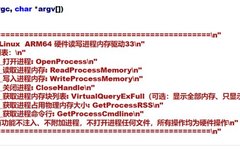Open Source Linux Process Memory Kernel Management Module Source Code
This article is an excellent piece from the Kanxue Forum. Author from Kanxue ForumID: abcz316 Linux is an open-source kernel system. I am also very fond of embedded Linux systems, especially its kernel source code, which is written in a style that I really appreciate. This driver was previously written during my spare time for … Read more









